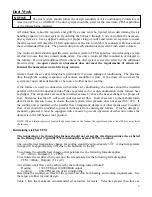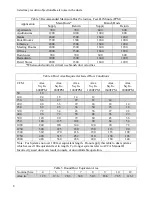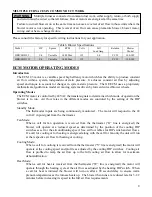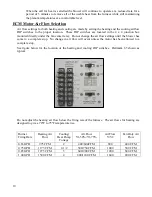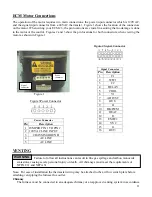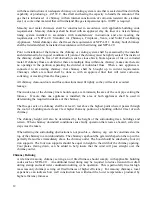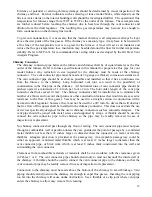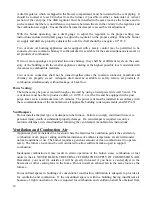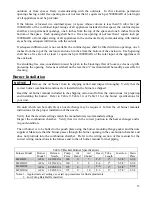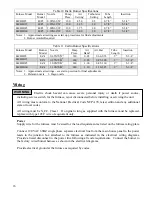
21
Start-up Equipment
THE FOLLOWING PROPER COMBUSTION INSTRUMENTS ARE REQUIRED TO
DETERMINE PROPER AIR ADJUSTMENTS AND DRAFT WHEN SETTING UP OR
SERVICING THE OIL BURNER. DO NOT ATTEMPT TO START UP OR SERVICE THE
FURNACE WITHOUT THE PROPER COMBUSTION INSTRUMENTS.
1.
Carbon-dioxide (C0
2
) or Oxygen (0
2
) Analyzer
2.
Draft gauge. Scale should read from +.10" W.C. to -.25" W.C.
3.
Oil Pressure Gauge 0-200 PSI
4.
Stack Thermometer
5.
Plenum Thermometer
6.
Smoke Test Gun
7.
Vacuum Gauge 0-30 in. of Hg
8.
Volt meter
9.
Amp meter
Burner Adjustments
Allow the burner to operate for at least 10 minutes before making the following adjustments. The
factory burner settings may not be suitable for specific job conditions.
Do not attempt to make any adjustments or start the furnace without the proper equipment.
1.
A 5/16” diameter hole will be required in the flue pipe between the furnace and the barometric
damper as close to the furnace as possible.
2.
Set the draft regulator (barometric damper) using a draft gauge to obtain a negative draft over-fire
of -.01 to -.02 in. W.C.
3.
Pump pressure – Install a pump pressure gauge in the oil pump following the oil burner
manufacturers’ recommendations. Adjust to obtain required pressure as necessary.
4.
Combustion Set-up – The air settings shown in Table 8 thru Table 10 are approximate. The
burner must be adjusted during actual field installed conditions. Failure to do so will result in
poor performance and nuisance service calls. After proper draft and oil pressure have been
established:
a.
Begin to close the air band to create a slight trace of smoke as noted on the Bacharach or
equivalent smoke tester scale.
b.
Take a flue gas sample and note the CO
2
reading. It will be about 12% to 13.5%
c.
Open the air band to reduce the CO
2
approximately 2%. The desired CO
2
setting for all
units should be 10% to 11%
d.
Check for “0” smoke. Head settings and/or air band may be altered to obtain the above
results. Lock the air band and head setting screws in place.
The above procedure will give a built in margin to ensure clean operation throughout the heating
season. Should draft conditions vary, lint accumulate in the fan, heavier oil delivered, or other
adverse conditions be encountered you will have a reasonable margin of built in protection before
smoke generation begins.
5.
Flue Gas Temperature - The flue gas temperature will vary to some degree depending on BTU
inputs, duct design and the air flow across the heat exchanger. The suggested minimum NET
stack temperature is 350
º
F, and the maximum stack temperature is 550
º
F. The lower the stack
temperature, the higher the efficiency; however, stack temperatures under 350
º
F may cause
condensation which in turn may cause metal corrosion.
Содержание HBD1 15
Страница 17: ...17 17...
Страница 31: ...31...

